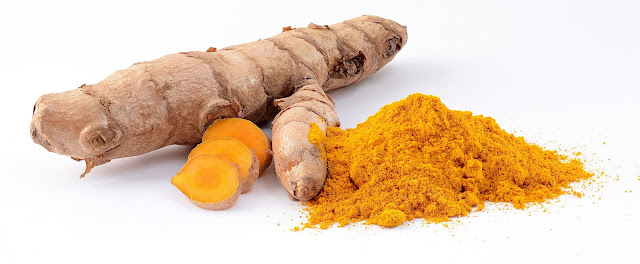Boost Your Blood Flow Fast: 10 Powerful Foods That Supercharge Circulation Naturally
10 Foods That Will Increase Your Circulation Naturally
Introduction
Good circulation is essential for overall health. Blood carries oxygen, nutrients, and hormones to every cell in the body, and poor circulation can lead to fatigue, cold extremities, and even more serious issues like varicose veins, high blood pressure, or heart disease. Fortunately, improving your circulation can start on your plate. Here are 10 natural foods that can significantly boost your blood flow and help your body thrive.
1.
Beets
Beets are rich in nitrates, which the body converts into nitric oxide—a compound that relaxes and dilates blood vessels, improving blood flow and lowering blood pressure. Studies have shown that drinking beet juice or adding beets to your meals can significantly enhance circulation and athletic performance.
Tip: Try beet juice before exercise or roast them with olive oil for a heart-healthy side dish.
 The beetroot (British English) or beet (North American English) is the taproot portion of a Beta vulgaris subsp. vulgaris plant in the Conditiva Group.[1] The plant is a root vegetable also known as the table beet, garden beet, dinner beet, or else categorized by color: red beet or golden beet. It is also a leaf vegetable called beet greens. Beetroot can be eaten raw, roasted, steamed, or boiled. Beetroot can also be canned, either whole or cut up, and often are pickled, spiced, or served in a sweet-and-sour sauce.[2]- Wikipedia |
2.
Cayenne Pepper
Cayenne pepper contains capsaicin, a compound that stimulates blood flow and promotes the health of arteries and blood vessels. It also helps reduce plaque buildup and LDL cholesterol, making it a great spice for circulation.
Tip: Add a pinch to soups, teas, or smoothies for a metabolism and circulation boost.
 |
| The cayenne pepper is a type of Capsicum annuum. It is usually a hot chili pepperused to flavor dishes. Cayenne peppers are a group of tapering, 10 to 25 cm long, generally skinny, mostly red-colored peppers, often with a curved tip and somewhat rippled skin, which hang from the bush as opposed to growing upright. Most varieties are generally rated at 30,000 to 50,000 Scoville units.[1]-Wikipedia |
3.
Fatty Fish (Salmon, Mackerel, Sardines)
These fish are high in omega-3 fatty acids, which help reduce inflammation, prevent blood clots, and support healthy arteries. Omega-3s improve endothelial function—the thin lining of blood vessels—leading to smoother blood flow.
Tip: Eat fatty fish at least twice a week for maximum benefits.
4.
Pomegranate
Pomegranates are packed with polyphenol antioxidants and nitrates that promote nitric oxide production and blood vessel dilation. Studies have shown that drinking pomegranate juice can improve blood flow and oxygenation of muscle tissue.
Tip: Enjoy fresh pomegranate seeds or pure juice without added sugars.
 |
| The pomegranate (Punica granatum) is a fruit-bearing deciduous shrub in the family Lythraceae, subfamily Punicoideae, that grows between 5 and 10 m (16 and 33 ft) tall. Rich in symbolic and mythological associations in many cultures, it is thought to have originated from Afghanistan and Iran before being introduced and exported to other parts of Asia, Africa, and Europe. |
5.
Garlic
Garlic contains sulfur compounds like allicin that help relax blood vessels and improve circulation. It also reduces blood pressure and protects against atherosclerosis (hardening of the arteries).
Tip: Crush fresh garlic and let it sit for 10 minutes before cooking to activate its medicinal compounds.
6.
Citrus Fruits (Oranges, Lemons, Grapefruits)
Citrus fruits are high in vitamin C and flavonoids, which strengthen capillary walls, reduce inflammation, and enhance nitric oxide production. These effects contribute to better vascular health and circulation.
Tip: Start your day with lemon water or snack on a vitamin C-rich orange.
7.
Turmeric
Curcumin, the active compound in turmeric, increases nitric oxide, reduces inflammation, and improves the function of blood vessels. It has been shown to improve blood flow as effectively as exercise in some studies.
Tip: Add turmeric to teas, curries, or take it in supplement form with black pepper to enhance absorption.
 |
| Turmeric (/ˈtɜːrmərɪk, ˈtjuː-/),[2][3] or Curcuma longa (/ˈkɜːrkjʊmə ˈlɒŋɡə/),[4][5] is a flowering plant in the ginger family Zingiberaceae. It is a perennial, rhizomatous, herbaceous plantnative to the Indian subcontinent and Southeast Asia that requires temperatures between 20 and 30 °C (68 and 86 °F) and high annual rainfall to thrive.-Wikipedia |
8.
Spinach and Leafy Greens
These vegetables are rich in nitrates and antioxidants that support cardiovascular health and healthy circulation. Like beets, they increase nitric oxide levels in the body, which dilates blood vessels.
Tip: Add spinach to salads, smoothies, or steamed as a side dish.
9.
Dark Chocolate
Rich in flavonoids, dark chocolate helps the body produce more nitric oxide, relaxing blood vessels and improving circulation. It also reduces oxidative stress and inflammation.
Tip: Choose chocolate that’s at least 70% cocoa and enjoy it in moderation.
 |
| Dark chocolate is a form of chocolate made from cocoa solids, cocoa butter and sugar. It has a higher cocoa percentage than white chocolate, milk chocolate, and semisweet chocolate. Dark chocolate is valued for claimed—though unsupported—health benefits, and for being a sophisticated choice of chocolate. -Wikipedia |
10.
Nuts and Seeds (Almonds, Walnuts, Flaxseeds)
These are packed with essential fatty acids, vitamin E, and magnesium—all important for blood vessel health and blood flow. They also help lower bad cholesterol and improve heart function.
Tip: Snack on a small handful of mixed nuts or add ground flaxseed to smoothies and oatmeal.
Final Thoughts
Improving circulation doesn’t have to mean a major life overhaul. Simple changes—like adding more of these circulation-boosting foods to your meals—can significantly improve blood flow, reduce your risk of cardiovascular disease, and boost your energy levels.
Start by incorporating 2–3 of these foods into your daily routine, stay hydrated, move your body regularly, and feel the difference good circulation can make.



Comments
Post a Comment